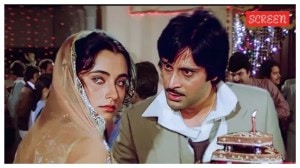Three cheers to craft beer in Chandigarh
Craft beers on tap, beer hopping & brewpubbing - it’s a beery good season and the Tricity microbreweries are running up quite a tab
 Tricity’s first microbrewery has been the address for gourmet beer since then, and this December, marks 12 years of brewing successfully.
Tricity’s first microbrewery has been the address for gourmet beer since then, and this December, marks 12 years of brewing successfully. It’s been 12 years since Hops ‘n’ Grains first opened its doors in Panchkula to a curious janta – the woody plush interiors of the restaurant spread over three floors connected by glass bridges, massive shiny steel tanks lined up behind a glass facade, the open space accentuated with leather upholstered seating, high chairs and tables, and placed on them, freshly crafted beer brew. It was 2010, and Hops ‘n’ Grains, with its European sensibilities and influence, sent the tab running with its trendsetting craft beer on tap. Tricity’s first microbrewery has been the address for gourmet beer since then, and this December, marks 12 years of brewing successfully. Meanwhile, The Brew Estate has been on an opening spree, and recently opened its 11th outlet in Zirakpur and is going international with a brewpub in Surrey, Canada next. Social’s quirkily christened beers, including the BMW (Bavarian Malt Wheat) and the Wee Heavy Scotch Ale are the beer hopheads’ pint. With the zythophiles always on the hunt for that ‘lager than life’ experience, Aarti Kapur Singh and Udhey Sidhu went ahead and organised city’s first beer hop recently.
From Hops ‘n’ Grains, The Great Bear, Social to The Brew Estate, Qizo, Boathouse, Peddlers, the beer tap is up and running in the rising number of microbreweries across the Tricity, and although it’s winters, “nothing works better than beer, hot kebabs off the BBQ and the warm afternoon sun,” says Sidhu.
The beer route
Microbreweries and brewpubs might be a relatively new phenomenon, but historically, Chandigarh, feels Sidhu, was never a stranger to beer. “We were home to the first breweries, the Shivalik Breweries,” says Sidhu. Aarti agrees. “Mohan Meakin has been right next door in Kasauli. The Route 66 culture imported from the US, the armed force veterans who love their drink, the urban migration to these parts and their love for beer…I feel, beer, rum and whiskey has been very much integral to the North, Punjab region. We still have people brewing their own liquor at home, especially in the villages,” says Aarti, a writer and consultant.
Interestingly, according to Sidhu, the region is also one of the highest per capita consumers of beer in India, and it does well because it compliments our cuisine too. The principle of beer is to match strength to strength, Priyanka Gupta, the co-founder of Hops ‘n’ Grains and The Great Bear Kitchen & Microbrewery brand points out. For instance, lagers do very well with the spicy tikkas and kebabs. “On the other hand whiskey with its woody, spicy, smokey notes fails to deliver an accentuated experience in taste because it’s paired with similar tasting food. While the craft beer, with its tangy, citrusy, fruity, tout, refreshing notes are a departure from the food and hence goes along fabulously,” adds Sidhu, a foodie, farmer and traveller who also runs his instagram page, gastronome.in.chandigarh.
The increasing popularity of craft beer also stems from the fact that it is the first alcoholic beverage that one graduates from a simple cold drink. For marketing head, The Brew Estate, it’s a ‘woman first drink’, while Aarti, feels experimentation and range of flavours makes it top the popularity charts. Zythophiles are learning to take the leap and appreciate newer experiences. “Lot of business is done outside the office premises, and beer is the perfect, affordable, less alcoholic substitute for a good day drink. With ten months of summer, and five flavourful seasons with an array of fruits to experiment with, the beer brewing potential is phenomenal,” adds Sidhu.
The beer biz
The Beer Processing Market is valued at around USD 676 billion in 2022 and is expected to reach USD 895.5 billion by 2030, registering a CAGR of 4.1% over the forecast period.
US-based Molson Coors Brewing Company that acquired Dera Bassi-based Mount Shivalik Breweries (maker of popular beer brand Thunderbolt) quoted “India as the fastest growing market and it’s their strategy to establish presence in the country, state by state.”
With state liquor licensing getting more relaxed, Amritanshu Agrawal, co-founder Hops ‘n’ Grains and The Great Bear Kitchen & Microbrewery brand sees a steady ‘ale and hearty’ rise of the beer culture. “The last decade has witnessed a wave of change…with people travelling, in search of the next big thing, craft beer is gaining traction. Brewpubs are open, safe spaces, and we’ve seen a sustained gradual increase in women drinking crowd too,” says Amritanshu, adding how there is a shift from the limited choice in bottled beer to now an array of flavoured craft beers. “Initially, our premium lager was the main beer. This is the beer most similar to bottled beers. Then the slightly sweeter, full bodied wheat beer took off and is a bestseller. In the last three years the demand is for dark beer with roasty caramel flavour,” adds Amritanshu. The beer market, he agrees, is growing worldwide. There are microbreweries coming up, and options are unlimited. But there is one thing that will actually help realize its potential – quality. “Making a good craft beer is a difficult process: one has to factor in the fermenting, the hygiene, the plant, the ingredients, the time: entire process and precision is vital to producing quality beer on tap. Most of the time, microbreweries treat the barley, the hops and grains as mere commodities. That’s not how it works. There is know-how, technique, research involved and a good brewmaster,” says Amritanshu, who imports his hops, grains, barley, wheat from Germany to ensure consistency in quality.
The Brew Estate’s Marketing Head, Naveen Dubey nods in agreement. With their raw material too sourced from Germany, he, like Amritanshu, hopes for more relaxations in the liquor laws, and like Maharashtra, are allowed to bottle brews. “We’ve had a meeting with the authorities proposing the setting up of tap rooms here, like Bengaluru. If it’s allowed, we get to increase the range and business,” adds Dubey.
The beer tap
To tap into the magic, a brewmaster is central to the brewing beer process. Brewmasters Vijay Prakash of Social and Gagan Deep of Hops ‘n’ Grains are known for experimenting and adopting new flavours and techniques. “The crowds are back post Covid, our consumer is young and craft beer is the new coffee,” says Vijay Prakash. Although craft beers are a tad more expensive than regular bottled beer, the microbreweries are producing and selling 2500 liters to 6000 liters of beer per outlet every month. Gagan Deep, who has been with Hops ‘n’ Grain from day one, has watched tipplers switch from bottled lager to sweeter, wheat flavours. “A brewmaster has to understand the palette of the customer. For instance, compared to the love for bitter flavours in South India, the Tricity prefers sweeter beers and hence something like green apple, strawberry, raspberry, rose, mango, paan, grapefruit do swimmingly well here,” says Gagan Deep. The misconception that beer cannot be consumed in winters too is cleared. “Darker denser brews are a hit in winters. Because of their longer fermentation cycle, they are more mature, taste better, and are enjoyed at room temperature,” adds Gagan Deep.
Craft brewers have already tapped into the low-ABV trend by offering lighter options like session-IPAs that weigh in around 4-5% ABV (alcohol by volume). “Traditionally lower-ABV beer styles like craft lagers have become more popular and will continue to grow in 2023. The industry has seen the birth of strong, flavorful craft beers, including honey flavouring, fruit and spice flavouring, sour, tart, and funky flavours. In addition to harmonising and complimenting the flavours of the beer, flowery flavours like chamomile, lavender, and elderflower provide a subtle taste and silky integrity to the brews. Beers with fresh ingredients and cutting-edge flavours are in vogue,” notes Vijay Prakash forseeing a demand for Stout, Ale, Punk Ale, Porter beers. “Fermented foods are gaining high regard in dietary considerations. And beer is a well-balanced, fermented food. Freshly brewed beers are rich in vitamin B6, B12 and folates,” Priyanka cheers to a ‘beery’ good season ahead.
Photos



- 01
- 02
- 03
- 04
- 05



























